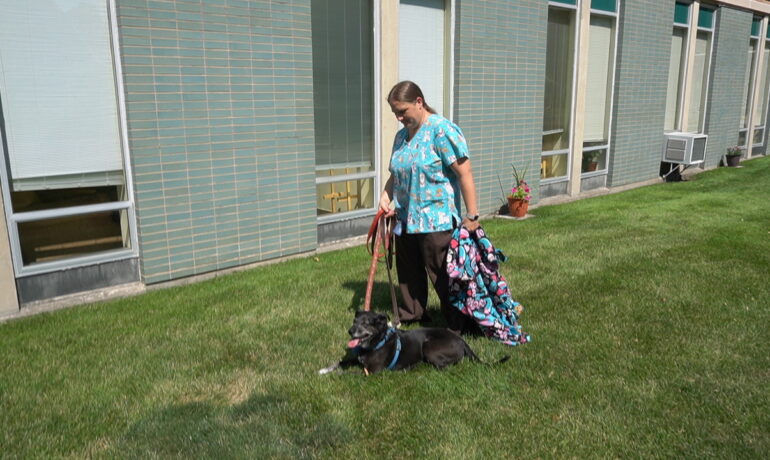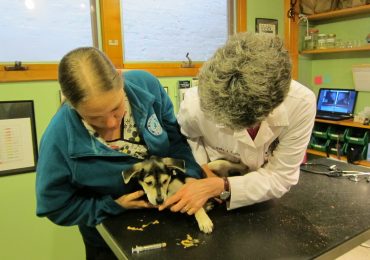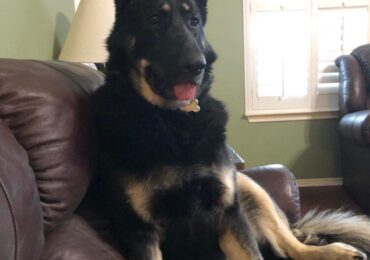The Low-Stress Veterinary Care Equation – The client is always a part of the equation
As I have created courses, immersion workshops, and in-clinic staff training services, I realize there are multiple steps to achieving a safe, Low-Stress Veterinary Care experience. Handling knowledge, clinic space management, and pre-exam medications are clearly part of the plan. When I asked my friend Esther Ling DVM what she felt was important when providing care for a highly anxious or aggressive patient she stated, “the client is always a part of the equation.” That really made sense to me. Creating a Low-Stress Veterinary Care experience is an equation of factors. And like any math equation, if the client is not fulfilling their part of the equation, the result is zero – no care.
What is the veterinary care equation?
There are five non-negotiable factors to provide safe, humane, low-stress veterinary care for a calm, non-painful animal. If any of these factors are not provided there will be an escalation of stress. This will increase agitation and bite risk. Subsequent veterinary exams will be more agitated. I will outline the care equation but first, let us understand the factors involved.
A key to abbreviations:
LSVC = Low-Stress Veterinary Exam An exam where the patient can take rewards and stays calm throughout care.
CSC= Client – staff communication. Intake forms, verification of patient needs, scheduling, and patient prep required
TS = trigger stripping. Removing the potential or known triggers or the patient from the triggers decreases fear, anxiety, and stress.
CA=Calm arrival. The patient is not barking, hissing, lunging, growling, pulling, pacing, or hiding at arrival, entry, and in the place of care.
SSC= Staff-to-staff communication. The staff verbally or non-verbally informs about the patient ladder of aggression or FAS level, triaged care, patient prep, and area to provide care to other staff members
TA= Time allotment. Is the time of day, amount of time, and intake – exam – release adequate for the planned care for today?
Low-Stress Veterinary Care equation –
Calm, healthy pets or first exam patients will need these five nonnegotiable factors to have an exam. Assuming each factor equals one, the score for an exam to happen is five for this category.
LSVC= CSC (1) x TS (1) xCA (1) xSSC (1) xTA (1) = 5
An example of a low-stress veterinary care exam for a calm pet would be as follows: a healthy cat arrives in a carrier, covered in a Feliway towel as instructed through your pre-exam patient form. The exam table is covered to hide the stainless steel, all the equipment, vaccines, etc. are present in the room to minimize noise and movement. The cat is calm in the carrier. The staff informed the veterinarian of the cat’s presentation and FAS discussed the handling plan and triage for care. There is enough time allotted for this intake, exam, and release based on the triaged care plan.
Aggressive, Anxious, or painful animals in care
The Low-Stress Care equation expands for pets presented in pain, who are anxious or aggressive. There are more factors needed to decrease the agitation and be safe. The additional factors are as follows:
ST= Safety tools. The patient accepts and is calm wearing a muzzle, hooding, an Elizabethan collar, or other safety tools.
Medp = Medical preparation. The medication, supplement, diet, or pheromones are given pre-exam to aid in reducing patient pain and or stress
PhyP= physical prep. The ability for the patient to stand for an exam, be comfortable with handling or touch, and or hungry for rewards.
AAR= After Action Review. Staff and client concisely review what the outcome of the LSVC equation was, and any adjustments for the factors in the future.
SS= Staff Skill. The staff has practiced and is knowledgeable about correctly reading escalating body language, trigger management, approach, comfortable safe holds, and rewarding for a safe low stress exam.
Anxious, aggressive or painful animals must reach a score of ten for their Low-stress exams. . The higher number reflects the added factors in providing care.
LSVC= CSC (1) xTS (1) xCA (1) XSSC (1) xTA(1)xST(1)xPhPx(1)xMedP(1)xSS(1)xTA(1)xSSC(1)xAAR(1) = 10
An example of a Low-Stress Veterinary Care Exam for an aggressive animal would be as follows: A dog has eaten his oral medication cocktail at home, 2 hours before traveling to the veterinary office. Travel to the veterinary office has been practiced with rewards and treats for calm arrival. Upon arrival, the dog willingly puts his muzzle on and wears it without any pawing or increased agitation. The dog will lead to a quiet area with little stimuli from other animals, people or other triggers are present. The staff will take the lead and position the dog to not see the veterinarian as the veterinarian gives a vaccination, or limited exam to prevent any escalation of agitation. Throughout the exam, the handler is communicating the level of the dog’s tension for the veterinarian to continuously evaluate and triage the care being provided. After the exam is completed, the dog is led away getting rewards tossed by the staff. The veterinarian, staff, and owner quickly review what went well and anything that did not prepare for the next visit. At any time, if the dog is not able to stay calm and non-aggressive for arrival, the exam, or being in the area for the exam the care is stopped. The dog is removed from the area and the veterinarian will determine what factor must be at a higher level to provide care.
So, what happens when one of the ten factors is not present? One example is a client that refuses to give the pre-exam medication, or the animal has a paradoxical (opposite effect) reaction.
When one of the factors is not present, the other factors must increase in value to equal ten. For example, if there are no medications given to help decrease anxiety and physical agitation, then the animal must be calm wearing a muzzle, no barking or meowing upon arrival, and the staff must be highly skilled in reading the subtle body language for any escalation and communicate more clearly to the other staff for safe handling. The after-action review must specifically discuss all the factors present to assess the safety and low-stress level of this non-medicated exam. Clear instructions and verification from the client that the animal is calm with safety tools, arrival, and calm in the exam area are required to schedule the appointment. In this example, the lack of medication eliminates the benefit of medical behavior management. For that reason, it requires the patient to be more prepared than with medication. If the client does not prepare the animal, it is not safe for the staff and the welfare of the pet is harmed. A few ways of verifying the patient prepare to require your clients to send you a video of the patient wearing the muzzle on a walk, and not pawing at it. Arriving at your practice parking lot, and not barking, or meowing as they are walked around during your business hours. If these factors are not at this level, you do not schedule the exam.
The old days are in the past
The days of just sedating an animal high enough to handle them are over. When all we focus on is getting the drugs in, getting to work, and sending them home, we are increasing the risk for staff injury, sedation medication risk, and not addressing the needs of the client or patient for future care. I know if emergency care, a ten-factor plan may not be possible as a patient cannot be prepped much ahead of time. There can always be some preparation, some pain relief administrated before handling, and a plan for the patient to have happy vet visits at the primary clinic to dilute the emergency care experience. In general practice, we must follow the ten-factor plan for our more challenging patients. Not following the plan increases staff injury risk, decreases patient welfare, and increases the difficulty of future exams.
Using the Low-Stress Care Equation creates a better care experience. Yes, the client will have to be more involved and flexible. Scheduling will consider the pet’s needs more than the clients. Not offering drop-off exams, scheduling appointments during low demand times, and providing telemed exams for rechecks and intake assessments expands care in a Low-Stress way. `Over time, anxiety and agitation decrease in our more challenging patients. That is the result we all want.
Get advanced Low-Stress Veterinary Care training
If you are a veterinary team member, learn and use the techniques of Low-Stress Veterinary Care daily. If you are not skilled in these techniques take some of the courses at my shop. For aggressive dogs, the K9 cocktail with drive by injection course provides case presentations and step-by-step training with online support for safe, advanced handling. If your clinic needs to get everyone on the same page for care, an immersive staff training will get you up to speed quickly. The immersive workshops at my veterinary clinic are a way to train staff leaders to take these skills back to the clinic and teach others.


